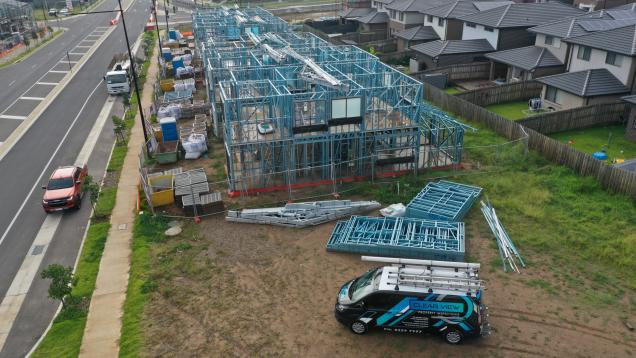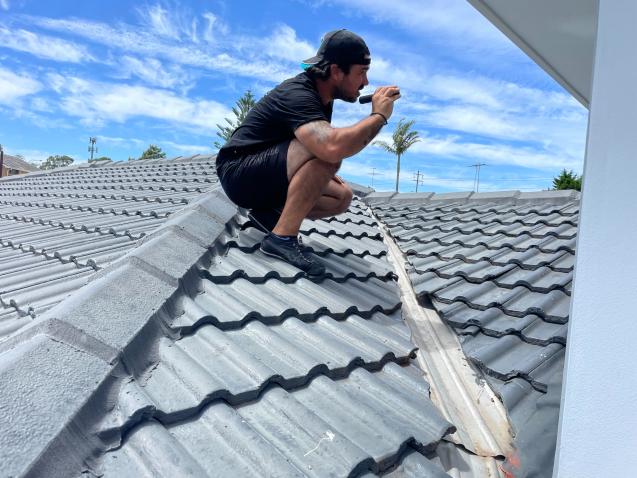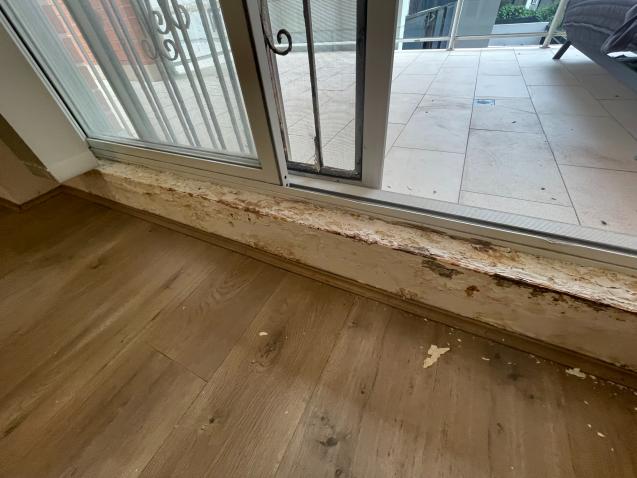
What’s inspected during a Pre-Purchase or Pre-Sale Property Inspection - Sydney Building Inspections.
By Clear View Property Inspections|January 05, 2024
So, what is actually covered as a minimum for property inspections? I will focus on solely the building inspection not the timber pest inspection. I will write an article on Timber pest property inspections in the future.
The criteria for Pre-Purchase property inspections have to comply with the Australian Standards AS4349.1–2007 (Pre-Purchase Inspections-Residential buildings)
The criteria I will be going through covers the minimum requirements for building inspections. This does not mean a business cannot go above and beyond as we do!
The building inspection is designed to identify the condition of the property you are looking to purchase at the time of the inspection. Its is not an inspection or report to identify non compliance within the requirements of any Act, regulation, ordinance, local law or a warranty against problems developing with the building in the future. The standard does not include the identification of unauthorized building work or of work not compliant with building regulations.
I believe a lot of the reasons the standard does not cover non-compliant building work is to identify non-compliant work we would need to identify the year the work was completed and then reference the appropriate standards and Building Codes of Australia at the time the property was built or renovated. To do this you would require an experienced builder who knows the building codes and relevant Australian standards very well. Unfortunately, there is no requirement to be a licensed builder to do pre-purchase building inspections, in fact there is no real education requirements at all. A lot of the time even the inspectors who are builders are builders on paper but no actual experience building homes! They did their theory training but have never been in the field building and understanding processes and methods which ultimately helps identifying defects and non-compliant work. At Clear View Property Inspections, we will endeavour to identify not compliant work when possible. We will refence the relevant code and standard of non-compliance. Of course, this is not always possible as we may not know when the home was built or renovated.
What areas should be inspected? As a General rule the inspector shall inspect all accessible parts of the building and appurtenances, together with relevant feature of the property within 30m of the building and within the boundaries of the site or as otherwise agreed in the inspection agreement. In context relevant features include car accommodation, detached laundry, ablution facilities and garden sheds, retaining walls more than 700mm high, paths and driveways, steps, fencing, earth embankments, surface water drainage and stormwater run-off.
Inspection of Strata and Company Title residential property shall be limited to the nominated residence and does not include common property.
The Following areas shall be inspected where applicable:
a) The interior of the building
b) The roof space
c) The exterior of the building
d) The subfloor space
e) The roof exterior
f) The property within 30m of the building subject to inspection.
Note: The inspection does not include all building services, furnishings, and the like, that may be present in the building.
It’s a substantial inspection if completed thoroughly and the pitfalls are in the details. If the property is heavily cluttered with furnishings and stored items this can be a problem. You will need to rely heavily on the inspector really looking around the furnishing and also trying to identify when a homeowner is trying to hide a major problem. The other issue is finding an inspector willing to spend the time and crawling in subfloors and roof cavities. Many times, roof cavities and subfloors can be tight access. Subfloors a lot of the times are wet and damp which will deter inspectors from actually entering and crawling around. Part of the Australian standards allows the inspector to determine the extent of accessible areas based on the conditions encountered at the time of inspection. The inspector shall also determine whether sufficient access space is available! This really makes things interesting as the inspector you select is well within his rights not to inspect parts of the home, he is not comfortable with. This is where choosing an inspector who is willing to crawl in tight spaces and in wet uncomfortable areas will pay off within the building inspection report. Not only do you want an inspector that is willing to inspect tight difficult to get locations but one that is fit and able to do so also.
Dimensions for reasonable access are as below:
400mm x 500mm access hole and 600mm x 600mm crawls pace and ladder access must be off a maximum of 3.6m.
This means that 2 story homes will not have the roof exterior inspected. For this reason, we at Clear view property inspections use a Drone to view the roof exterior.
If only every subfloor had 600mm x 600mm crawl space! If we used this rule, we would never inspect any subfloors! The number of homes we inspect for our clients that we have managed to complete the full subfloor inspection but, in the sellers, building report the inspector had noted no access to subfloor on their report is tremendous. Inspectors take advantage of this rule to only miss major defects like termite damage, major subsidence issues to footings, Moisture issues and so much more, these are some of the defects we find on regular occasions.
In a recent inspection we completed (property was going for auction) the property was beautifully renovated. During our inspection the garage was full of stored items but what stood out was the owner had but toolboxes in front of a door which seemed to be a store room. This didn’t seem right and looked suspicious. We decided to move the equipment and tools carefully which took some time but ultimately was well worthwhile. What we found was a store room which led under the ensuite above. There was major moisture issues, leaks and termite damage! The owner was obviously trying to hide this for the sale of the property. Lucky for our client they decided not pursue the property and not attend the auction but no so lucky for the other potential buyers who used the building inspection report arranged by the real-estate which had no mention of these issues in there building report.
This was a brief article to try detail the most important issues within the pre-purchase building inspection reports.
We hope you enjoyed our article. For further information please visit our website.
www.clearviewpropertyinspections.com.au
The criteria for Pre-Purchase property inspections have to comply with the Australian Standards AS4349.1–2007 (Pre-Purchase Inspections-Residential buildings)
The criteria I will be going through covers the minimum requirements for building inspections. This does not mean a business cannot go above and beyond as we do!
The building inspection is designed to identify the condition of the property you are looking to purchase at the time of the inspection. Its is not an inspection or report to identify non compliance within the requirements of any Act, regulation, ordinance, local law or a warranty against problems developing with the building in the future. The standard does not include the identification of unauthorized building work or of work not compliant with building regulations.
I believe a lot of the reasons the standard does not cover non-compliant building work is to identify non-compliant work we would need to identify the year the work was completed and then reference the appropriate standards and Building Codes of Australia at the time the property was built or renovated. To do this you would require an experienced builder who knows the building codes and relevant Australian standards very well. Unfortunately, there is no requirement to be a licensed builder to do pre-purchase building inspections, in fact there is no real education requirements at all. A lot of the time even the inspectors who are builders are builders on paper but no actual experience building homes! They did their theory training but have never been in the field building and understanding processes and methods which ultimately helps identifying defects and non-compliant work. At Clear View Property Inspections, we will endeavour to identify not compliant work when possible. We will refence the relevant code and standard of non-compliance. Of course, this is not always possible as we may not know when the home was built or renovated.
What areas should be inspected? As a General rule the inspector shall inspect all accessible parts of the building and appurtenances, together with relevant feature of the property within 30m of the building and within the boundaries of the site or as otherwise agreed in the inspection agreement. In context relevant features include car accommodation, detached laundry, ablution facilities and garden sheds, retaining walls more than 700mm high, paths and driveways, steps, fencing, earth embankments, surface water drainage and stormwater run-off.
Inspection of Strata and Company Title residential property shall be limited to the nominated residence and does not include common property.
The Following areas shall be inspected where applicable:
a) The interior of the building
b) The roof space
c) The exterior of the building
d) The subfloor space
e) The roof exterior
f) The property within 30m of the building subject to inspection.
Note: The inspection does not include all building services, furnishings, and the like, that may be present in the building.
It’s a substantial inspection if completed thoroughly and the pitfalls are in the details. If the property is heavily cluttered with furnishings and stored items this can be a problem. You will need to rely heavily on the inspector really looking around the furnishing and also trying to identify when a homeowner is trying to hide a major problem. The other issue is finding an inspector willing to spend the time and crawling in subfloors and roof cavities. Many times, roof cavities and subfloors can be tight access. Subfloors a lot of the times are wet and damp which will deter inspectors from actually entering and crawling around. Part of the Australian standards allows the inspector to determine the extent of accessible areas based on the conditions encountered at the time of inspection. The inspector shall also determine whether sufficient access space is available! This really makes things interesting as the inspector you select is well within his rights not to inspect parts of the home, he is not comfortable with. This is where choosing an inspector who is willing to crawl in tight spaces and in wet uncomfortable areas will pay off within the building inspection report. Not only do you want an inspector that is willing to inspect tight difficult to get locations but one that is fit and able to do so also.
Dimensions for reasonable access are as below:
400mm x 500mm access hole and 600mm x 600mm crawls pace and ladder access must be off a maximum of 3.6m.
This means that 2 story homes will not have the roof exterior inspected. For this reason, we at Clear view property inspections use a Drone to view the roof exterior.
If only every subfloor had 600mm x 600mm crawl space! If we used this rule, we would never inspect any subfloors! The number of homes we inspect for our clients that we have managed to complete the full subfloor inspection but, in the sellers, building report the inspector had noted no access to subfloor on their report is tremendous. Inspectors take advantage of this rule to only miss major defects like termite damage, major subsidence issues to footings, Moisture issues and so much more, these are some of the defects we find on regular occasions.
In a recent inspection we completed (property was going for auction) the property was beautifully renovated. During our inspection the garage was full of stored items but what stood out was the owner had but toolboxes in front of a door which seemed to be a store room. This didn’t seem right and looked suspicious. We decided to move the equipment and tools carefully which took some time but ultimately was well worthwhile. What we found was a store room which led under the ensuite above. There was major moisture issues, leaks and termite damage! The owner was obviously trying to hide this for the sale of the property. Lucky for our client they decided not pursue the property and not attend the auction but no so lucky for the other potential buyers who used the building inspection report arranged by the real-estate which had no mention of these issues in there building report.
This was a brief article to try detail the most important issues within the pre-purchase building inspection reports.
We hope you enjoyed our article. For further information please visit our website.
www.clearviewpropertyinspections.com.au



